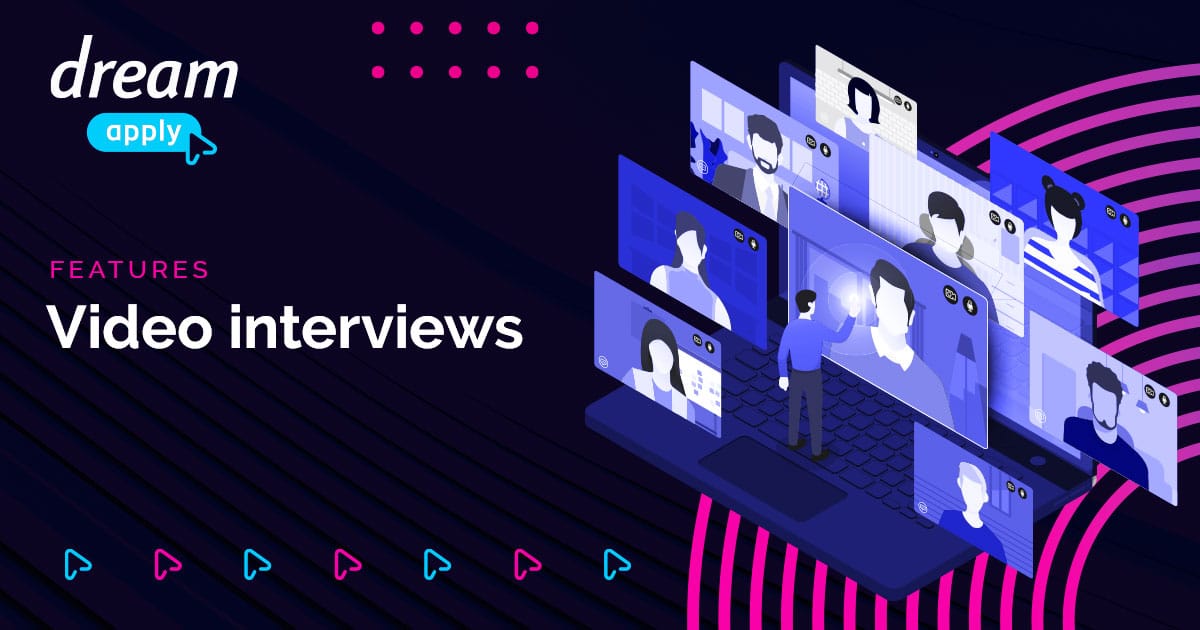As artificial intelligence (AI) continues to revolutionize industries and transform our lives and work, the higher education sector is not immune to its effects. In recent years, AI technology has increasingly been incorporated into university admissions processes as a way to streamline operations and increase efficiency. However, this trend has also led to concerns about bias and unfairness, leading universities to look for solutions that balance the benefits of AI with the need for human interaction and judgment in admissions decisions.
The Growing Need for AI-Resistant Solutions in University Admissions
As AI technology becomes more advanced and ubiquitous, universities face the challenge of using it in a way that does not compromise the fairness and transparency of admissions decisions. Although AI algorithms can analyze large amounts of data and make predictions with great accuracy, they can also perpetuate biases and stereotypes that are present in the data they are trained on.
For example, an AI algorithm might favor applicants who come from more affluent backgrounds or who attended prestigious schools simply because those factors have historically been associated with success. This can have a detrimental impact on diversity and inclusivity in higher education, and it also raises ethical concerns about the use of AI in decision-making processes that affect people’s lives.
The Rise of AI in the Admissions Process
The use of AI in university admissions processes has become increasingly common in recent years. Some of the applications of AI in admissions include:
- Automated essay grading
- Predictive modeling to identify student success
- Assessments of non-cognitive skills
- Resume parsing and analysis
- Identification of plagiarism
Despite the potential benefits of using AI in these ways, there is also concern that they can dehumanize the admissions process. Applicants may feel as though they are being evaluated purely on their test scores and data points rather than as individuals with unique qualities and experiences.
The Challenges Posed by AI in Admissions
One of the most significant challenges posed by AI in university admissions is the potential for bias. Machine learning algorithms are only as unbiased as the data they are trained on, and if that data contains biases or reflects societal prejudices, the algorithms will replicate those biases in their decision-making.
This can result in the exclusion of certain groups of applicants or the perpetuation of inequality in higher education. Additionally, there are concerns about the lack of transparency in the decisions made by AI algorithms, which can make it difficult for applicants to understand why they were rejected or waitlisted.
Another challenge AI presents in admissions is the potential for errors in the algorithms themselves. While AI can be highly accurate in its predictions, it is not infallible. There have been cases where AI algorithms have made errors in identifying plagiarism or assessing non-cognitive skills, which can seriously affect applicants.
Furthermore, there is concern that using AI in admissions could lead to a “race to the bottom” regarding the quality of applicants. If universities rely too heavily on AI algorithms to make admissions decisions, they may miss out on promising applicants who do not fit the mold of what the algorithm considers to be a “successful” applicant.
The Importance of Human Interaction in Admissions Decisions
While AI can be a powerful tool in university admissions, it is important to remember that it cannot replace human judgment and interaction. Admissions decisions are complex and multifaceted, often requiring a nuanced understanding of an applicant’s background, experiences, and goals. Furthermore, the admissions process allows universities to connect with applicants and build lasting relationships throughout their academic careers.
Human interaction can also help mitigate the potential biases and errors that can arise from using AI in admissions. By involving multiple people in the decision-making process, universities can ensure that decisions are made fairly and transparently and that each applicant’s unique qualities and experiences are taken into account.
Finally, human interaction can help to address the concerns about the dehumanization of the admissions process that can arise from the use of AI. By engaging with applicants personally, universities can demonstrate that they value the whole person, not just their test scores or data points.
In conclusion, while AI has the potential to revolutionize the university admissions process, it is important to approach its use with caution. Universities must be aware of the potential biases and errors that can arise from using AI and take steps to mitigate them. They must also remember that human interaction is a vital component of the admissions process and must ensure that it is not lost in a rush to adopt new technologies.
Introducing DreamApply’s Video Interview Feature
As universities look for ways to incorporate AI into their admissions processes while maintaining a human touch, a new solution has emerged: video interviews. DreamApply’s video interview feature is a versatile and effective way for universities to supplement their existing admissions workflow with interactive, face-to-face engagement with applicants.
Video interviews have become increasingly popular in recent years as a way for universities to get to know their applicants better. With DreamApply’s video interview feature, universities can take advantage of this trend and offer their applicants a more personal and engaging experience.
How the Video Interview Feature Works
The video interview feature allows universities to invite applicants to record a video of themselves answering pre-set questions. These questions can be customized to fit the university’s needs and can vary depending on the program or department. Applicants can record their videos at their own convenience, which means they do not have to worry about scheduling in-person interviews or making travel arrangements. Once the videos have been recorded, admissions officers can review them and use them as part of their evaluation process.
The video interview feature is easy to use and can be accessed through the same platform as other admissions materials. Applicants click on the video interview link and follow the prompts to record their responses. The feature is compatible with most devices, including smartphones and tablets, making it accessible to many applicants.
Key Benefits of DreamApply’s Video Interview Solution
DreamApply’s video interview solution offers several key benefits for universities:
- Improved applicant engagement: Video interviews provide a more personal, interactive experience for applicants, which can be a major factor in their decision to apply to a university. By offering this feature, universities can demonstrate their commitment to providing a high-quality education and a supportive community.
- Reduced travel costs: By allowing applicants to record their videos remotely, universities can save money on travel expenses. This is particularly beneficial for international applicants who may not be able to travel to the university for an in-person interview.
- Increased efficiency: Video interviews can be reviewed more quickly than in-person interviews, which can help streamline the admissions process and reduce wait times for applicants. Admissions officers can review the videos at their convenience and share them with colleagues as needed.
- Reduced bias: Video interviews can help reduce bias in admissions decisions by allowing admissions officers to evaluate applicants based on more than just data points or test scores. By seeing and hearing the applicant, admissions officers can better understand their personality, communication skills, and overall fit for the university.
Overall, DreamApply’s video interview solution is a valuable tool for universities looking to enhance their admissions process and provide a more engaging experience for their applicants.
Integration with Existing University Systems
DreamApply’s video interview feature is designed to integrate seamlessly with existing university systems. It can be accessed through the same platform as other admissions materials, and the videos can be easily shared among admissions officers as needed. This makes it easy for universities to incorporate the video interview feature into their existing workflow without disrupting their current processes.
In conclusion, DreamApply’s video interview feature is a powerful tool for universities looking to improve their admissions process and provide a more engaging experience for their applicants. With its customizable questions, easy-to-use interface, and seamless integration with existing university systems, the video interview feature is valuable to any admissions workflow.
Advantages of Video Interviews in the Admissions Process
In addition to the benefits provided by DreamApply’s video interview feature specifically, video interviews offer several advantages for universities in general:
Enhancing the Applicant Experience
Video interviews allow applicants to showcase their personality and communication skills in a way that is impossible with other admissions materials. This can help them stand out from other applicants and feel more engaged with the admissions process overall.
Reducing Bias and Ensuring Fairness
Video interviews can help reduce the potential for bias in admissions decisions by providing admissions officers with more information about applicants than just their test scores or data points. This can lead to more fair and equitable decisions.
Streamlining the Admissions Workflow
By allowing applicants to record their videos remotely and at their own convenience, universities can save time and resources that would otherwise be spent scheduling and conducting in-person interviews. This can be especially beneficial for international applicants who may not be able to travel to attend an in-person interview.
Case Studies: Universities Successfully Using DreamApply’s Video Interview Feature
Several universities have successfully implemented DreamApply’s video interview feature in their admissions processes. Here are a few examples:
University A: Improving International Student Recruitment
University A used DreamApply’s video interview feature to connect with international applicants who could not attend in-person interviews. The university found that the videos provided a more personal and engaging experience for these applicants, which increased international student enrollment.
University B: Increasing Diversity and Inclusivity
University B used DreamApply’s video interview feature to reduce potential bias in their admissions decisions. By reviewing videos of applicants answering the same questions, admissions officers could make more informed and equitable decisions, which led to a more diverse and inclusive student body.
University C: Enhancing the Admissions Process for Competitive Programs
University C used DreamApply’s video interview feature to supplement its existing admissions process for highly competitive programs. The videos gave admissions officers a complete picture of each applicant’s qualifications and experiences, which helped them make more accurate and informed decisions.
The Future of University Admissions: A Balance Between AI and Human Interaction
As AI continues to shape the landscape of higher education, it is essential that universities find ways to balance its benefits with the need for human judgment and interaction in the admissions process. DreamApply’s video interview feature provides an ideal solution for universities seeking to incorporate AI into their admissions workflow while maintaining a personal, human touch.
With its ability to reduce bias, enhance applicant engagement, and streamline the admissions process, video interviews are poised to become an increasingly important tool for universities looking to stay competitive in an ever-changing higher education landscape.
About DreamApply
Founded in 2011 in Estonia, DreamApply is an innovation-driven EdTech organization improving access to education around the globe. DreamApply’s application management software helps more than 300 educational institutions across 40 countries improve admissions, marketing, scholarship management and other internal processes.
DreamApply’s easy-to-use and customizable software increases student enrollment by 30% and reduces application processing time by 40%. With features designed with and for educational institutions, and integrations with commonly used systems, DreamApply empowers teams to get more done with less effort.
Continue exploring by requesting your free, personalized demo.
Subscribe and be the first to receive new case studies, podcast episodes, blog articles and other EdTech resources.

